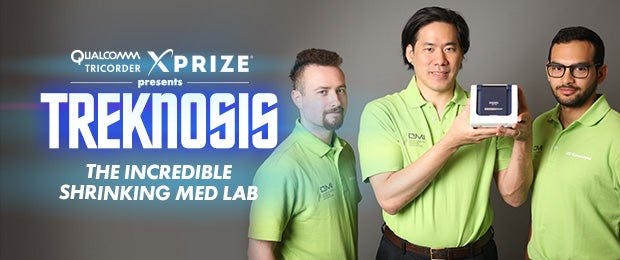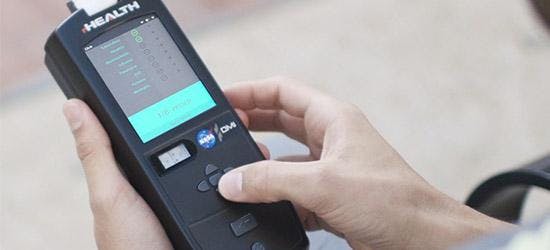Published Dec 21, 2014
The Incredible Shrinking Med Lab
The Incredible Shrinking Med Lab

In space, no one has room for a medical laboratory.Seriously. If you're trying to build a spaceship, every ounce of weight counts; the heavier a ship is, the more energy it takes to boost it into orbit, which means using more powerful (and potentially dangerous) rocket engines -- not to mention increasing the amount and cost of fuel. So instead, it seems like a better idea to try to pack everything into the smallest vessel possible, including the people and equipment. Back in 2008, NASA put out a call for a technology that would allow them to perform a battery of medical tests on astronauts during the long trip to Mars, while also saving as much space and weight as possible. Dr. Eugene Y. Chan and the DNA Medical Institute (DMI) answered that call.His first thought was: blood. Not in a thirst-for-vengeance way, but as a practicing clinician. "At the very outset," Dr. Chan explains, "we focused on blood because the majority of lab tests you perform are focused on blood." DMI began working on a way to test samples using the smallest amount of blood possible, shrinking the equipment needed to match. For instance: their cytometer, used to determine blood cell count, ended up shrinking a thousandfold to become a device about the size of a matchbox. Test strips used to signal specific conditions or pathogens shrunk a billionfold to become nanostrips; tens of thousands would fit in a single drop of blood, each corresponding to a specific test. They dubbed their technology Reusable Handheld Electrolyte And Lab Technology for Humans, or rHEALTH.Then, word drifted Dr. Chan's way about an XPRIZE competition in the works to develop a real-life medical tricorder. Already a Star Trek fan, he remembers thinking it was tailor-made for his team and their device. Besides the baseline technical accuracy and reliability required, he and his team had prioritized two qualities: speed and simplicity. "Patients often have a significant need for fast lab results," he says, and hospital laboratories can be overworked and backlogged. "Sometimes valuable medical care can be delayed many hours while you're waiting on lab info; it can be the difference between life and death." Simplicity was also a must. As he puts it, "Lots of times, you need skilled personnel to perform blood draws, because you can get patients who don't have good veins for whatever reason." All that was missing from rHEALTH was a non-invasive vital sign monitor, which they quickly set about adding.

But were they on the right track? In Dr. Chan's words, "It's about having the right idea in the first place. If you work really hard on the wrong idea, it's not going to get anywhere! You want to make sure you're aiming resources in the right direction." Team DMI's continued relationship with NASA was one clue; rHEALTH has been tested in low-gravity environments and will soon be shipped to the International Space Station for further trials.
"We've built strong relationships with NASA," Dr. Chan says. "rHEALTH has stood the test of time down at the Johnson Space Center." Further validation came just recently when Team DMI won the Grand Prize in the $2.25M Nokia Sensing XCHALLENGE after demonstrating their vital signs monitor and rHEALTH before a panel of judges. The quality of the demo, Dr. Chan recalls, was extraordinarily important. "Whether or not people believe your technology works in person is huge. It forced us to complete things we otherwise wouldn't have done."The challenges to Team DMI's approach are enormous. Dr. Chan describes it as "a symphony of technology." As he puts it, "You're taking an entire hospital test center and shrinking it into a small device. Everything has to be rethought, and you need to put it all together cohesively, so the end result is something that solves problems for each and every one of us." The sample loading mechanism alone required 20 prototypes to get right; the method they ended up with, he says, is "pretty novel."






